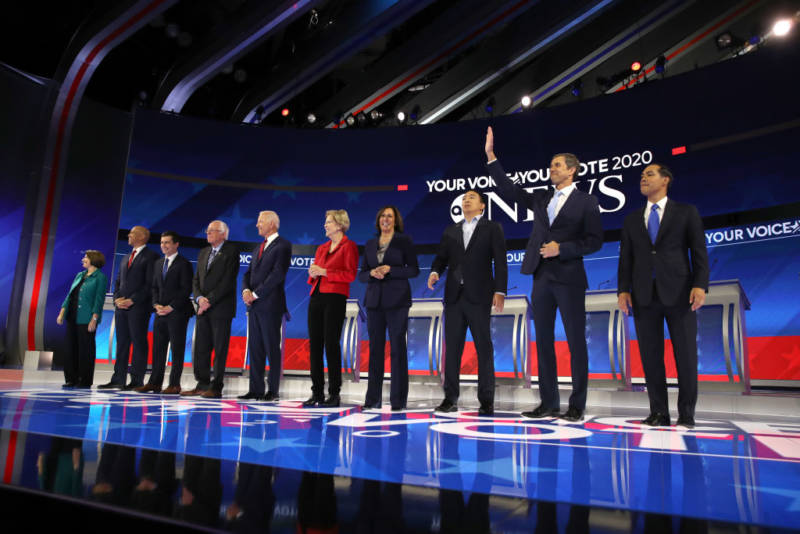KQED’s Political Breakdown team is partnering with Change Research to gauge Californians’ support for Democratic presidential candidates ahead of the 2020 primary. Change Research will conduct polls monthly through the March primary, and KQED will be the first media outlet to publish the results.
KQED may also separately commission additional polling questions on state election issues.
Why is KQED commissioning polls?
With so much interest in the 2020 election, we see an opportunity to provide our audience with insights into the race, as well as other key issues coming before the electorate in California. We are also excited to have the opportunity to track changes in public opinion over time, as the campaigns progress and we develop a better idea of what else will be on the 2020 ballot.
How is this poll different from other polls?
Traditionally, polls have been conducted by phone — which is typically a resource-intensive, expensive and slow process. Change Research polling, however, is conducted exclusively online so it can be completed within a few days and released quickly — hopefully making the snapshot in time as accurate as possible.
FiveThirtyEight, the well-respected news site that relies on statistical analysis, gives Change Research a C+ rating based on seven of its publicly released polls, finding that it accurately predicted election results 57% of the time. But the polling firm has conducted over 800 polls and argues they have a stronger record of accuracy.
Who else does Change Research work with?
Media partners in other states include The Nevada Independent and The Post and Courier in South Carolina. The San Francisco Bay Area-based firm also has paid clients, including nonprofits, foundations, advocacy organizations, Democratic candidates and Crooked Media, which produces “Pod Save America” and other programs.
How does the polling work?
Change Research pays to put advertisements online — on both websites and social media platforms — asking people in certain geographic areas to respond to polling questions. Respondents are asked information such as their age, where they live and who they voted for in the last primary, in addition to specific questions about candidate preference. The firm uses algorithms developed by studying past voter trends to ensure it gets a large sample that reflects the demographics of a likely electorate — in this case, California voters.

